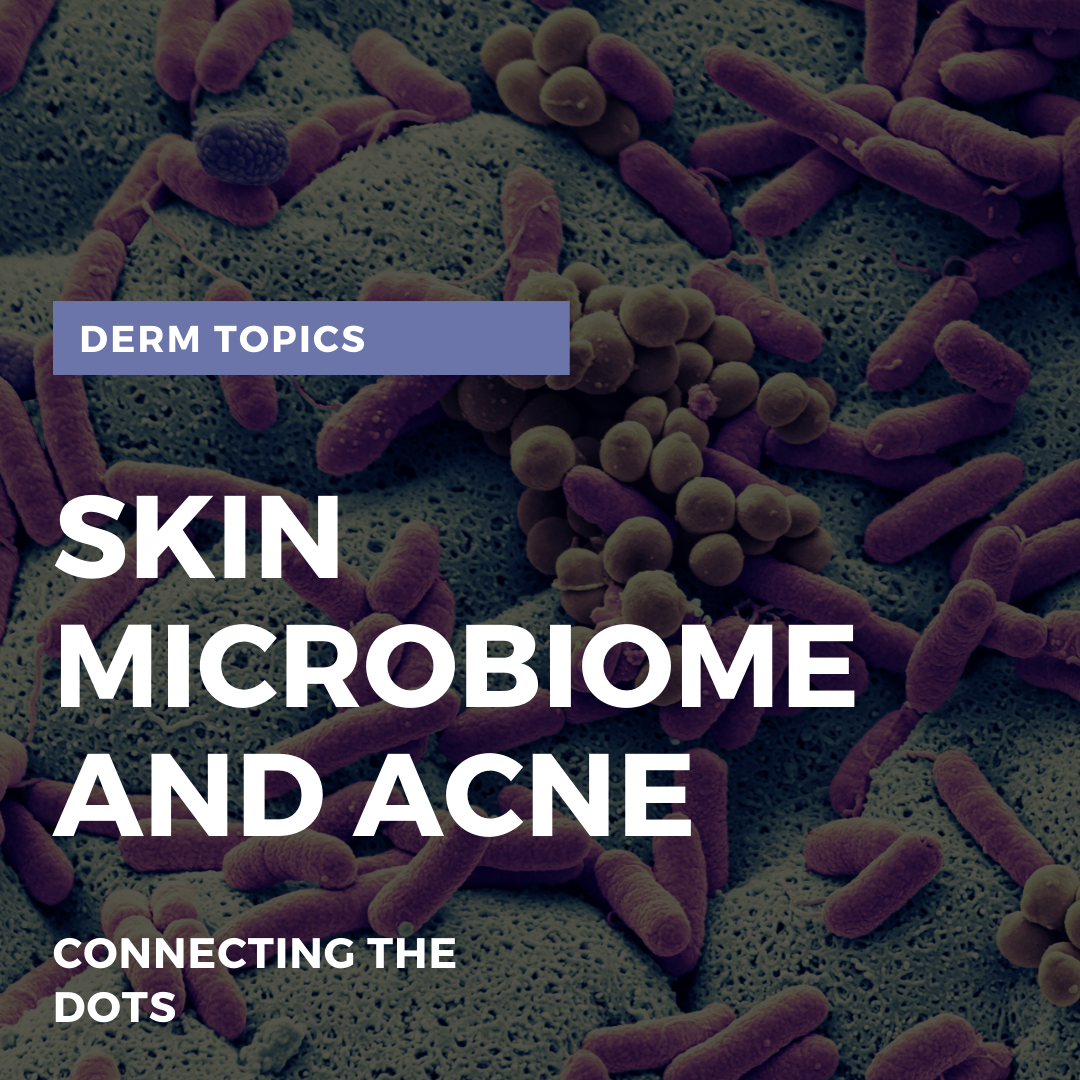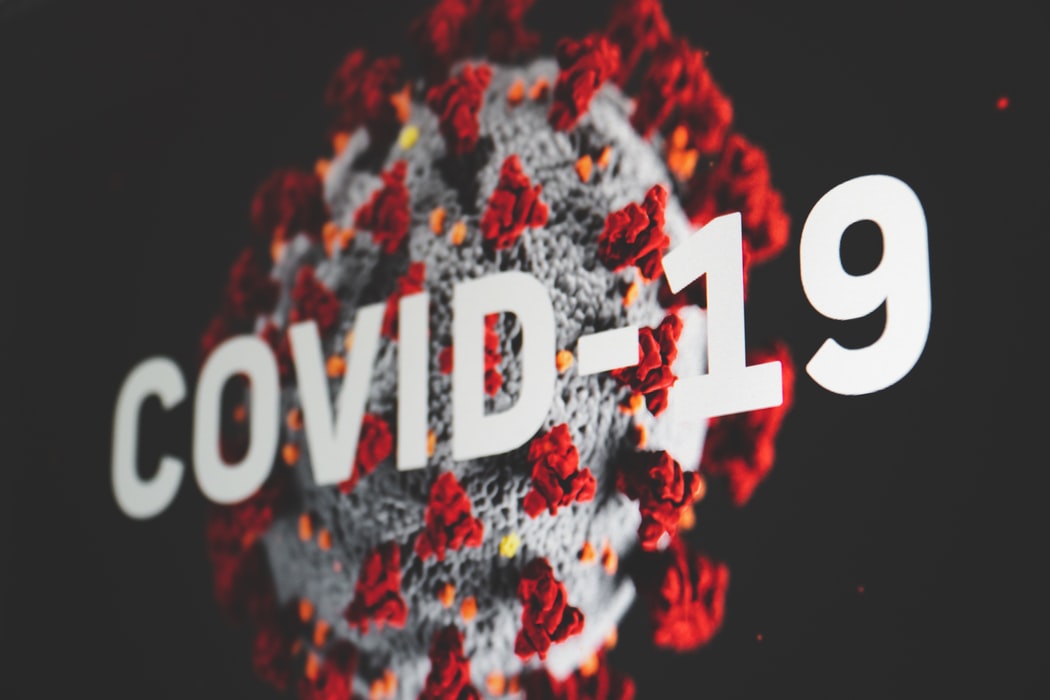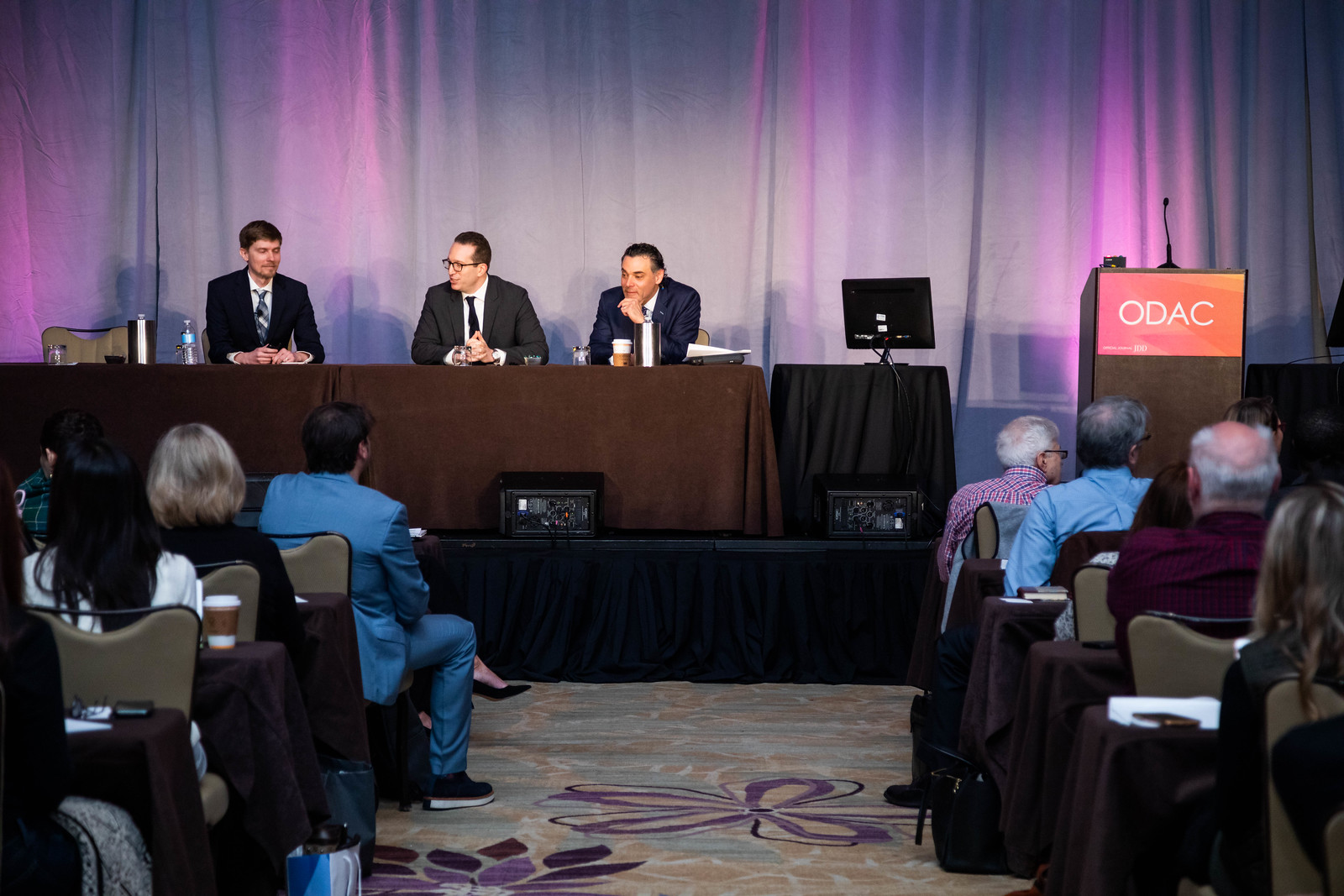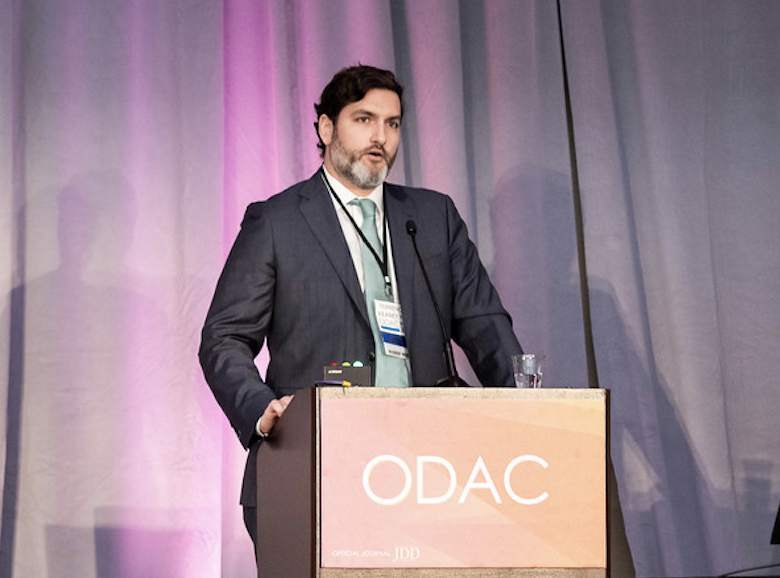Sheila Barbarino, MD, FACS, FAAO, FAACS
Owner
Institution Barbarino Surgical Arts
Austin, TX & El Segundo, CA
ODAC

When we think about skin, a few things come to mind: protection, temperature regulation, sensation. However, there is growing interest in the microbiome of the skin. Our skin flora can be likened to an invisible ecosystem. Similar to fingerprints, it is unique to each individual. The complexity of the skin microbiome is continuing to be researched. This research is paving the way to improve our understanding of the relationship between acne and dysbiosis.
At the GW Virtual Appraisal of Advances in Acne Conference, Dr. Adam Friedman discussed Microbiome Manipulation in the Management of Acne. His lecture provided insight on the microenvironment of the skin and how the diversity in skin flora can affect disease processes such as acne.
First, let me share a few pearls from Dr. Friedman’s lecture.
The skin is a physical barrier against invasion by pathogenic organisms and foreign substances. The skin is also an ecosystem, host to a variety of microorganisms that are typically harmless.
The habitat of the skin varies topographically and there are several factors that contribute to this unique variation among individuals.
The cutaneous immune system modulates and can be modulated by these commensal microorganisms. Dysbiosis, which directly refers to decreased microbial diversity, is directly linked to dysregulation of the skin immune response is evident in several skin disorders.
When we think about the skin barrier, we usually think about the hydrophilic corneocytes and hydrophobic lipids that make up this security guard for your skin. However, we do not necessarily think about the invisible barrier that protects the skin, which is composed of numerous microorganisms. Both of these components are vital to the structural stability of the skin barrier. If this invisible barrier is disrupted, this may lead to skin disease. Why are these commensal organisms so important?
Role of commensal organisms on the skin:
We all have a unique skin microbiome. What contributes to the variability of the skin microbiome?
Factors contributing to individual variations in skin microflora:
Read more….
Hosted by George Washington University, in Partnership with ODAC Dermatology, Aesthetic & Surgical Conference and Next Steps in Derm
Even during a global pandemic we cannot forget that Acne Vulgaris is one of if not THE most common skin condition afflicting our patients and the general populace. With the disruption of clinics and conferences, innovative vehicles for the dissemination of the most up to date data and expert anecdote are certainly and sorely needed.
Enter the GW Virtual Acne Appraisal Conference: A 3 hour program that promises to pander to your pimple popping practices with short but sweet lectures from the acne gurus covering the gamut of the big A. From treatments to treats, from considering the microbiome to unique treatment approaches in specific patient populations, we will cover it all. And if that wasn’t enough, we will round it out with a perusal of the therapeutic pipeline. It will be all that and a bag of chips (which may or may not cause acne…you need to tune in to find out).
8:00 – 8:15 – Introduction and Welcome
8:15 – Topical Management of Acne– James Q. Del Rosso, DO, FAOCD, FAAD
8:30 – Use of Hormonal Therapies in Acne– Julie Harper, MD
8:50 – Use of Antibiotics in Acne – Neal Bhatia, MD
9:10 – Issues with Isotretinoin: Fact vs. Fiction – Jenna C. Lester, MD
9:30 – Microbiome Manipulation for the Management of Acne – Adam Friedman, MD, FAAD
9:45 – Diet and Alternative Therapies: What to know for Acne management – Vivian Shi, MD
10:00 – Management Considerations for Skin of Color Patients with Acne –Andrew Alexis, MD, MPH
10:20 – Managing Acne in the LGBTQ+ Population – Angelo Landriscina, MD
10:40 – New and Emerging Therapies for Acne – Leon Kircik, MD
This webinar was previously recorded on July 1, 2020 and is now available on demand.
ODAC Dermatology, Aesthetic & Surgical Conference’s Medical Director, Dr. Adam Friedman, discusses the ODAC 2021 program, reasons to attend and more!
To view the full agenda, click here: https://orlandoderm.org/agenda/
ODAC Dermatology Conference, in partnership with Next Steps in Derm, interviewed Dr. David Miller, Instructor in Dermatology and Medicine at Harvard Medical School and member of the Department of Dermatology and the Department of Medicine at Massachusetts General Hospital, where he is co-director of the Merkel cell carcinoma treatment program. Watch as he shares important updates on Immuno-Oncology (IO) strategies for melanoma.

Source: Journal of Drugs in Dermatology
While the world lives under the shadow of the novel coronavirus (COVID-19) pandemic, dermatologists wonder if the current situation calls for a temporary change in the management of skin conditions.
Immunosuppressive drugs are used ubiquitously in the modern treatment of inflammatory and autoimmune skin diseases like psoriasis, bullous diseases, connective tissue diseases, and many others. Treatment of these conditions is based on the suppression of the patient’s immune system using steroids, steroid-sparing drugs, and biological agents.1
While the effects of the novel coronavirus on the body and its immune system are still being studied, there is overwhelming evidence that the virus could directly or indirectly affect the immune system. In one study, lymphocytopenia was reported in 83.2% of the admitted patients and might be associated with a worse prognosis.2In another study, a steady decline in the lymphocyte counts was recorded in a group of patients who did not survive the infection.3
While the coexisting comorbid medical conditions (such as diabetes or heart disease) are considered as independent predictors of an adverse outcome of the novel coronavirus infection,4 it could be assumed that the chronic inflammatory and autoimmune skin diseases like psoriasis by themselves might imply an additional risk factor of developing more serious symptoms of the novel virus due to their chronicity and effects on the immune system.5
The use of immunosuppressive to treat these conditions can amplify this effect, and it might leave the patient vulnerable to more serious complications should an infection with the novel coronavirus be established. Hence, it may be wise to restrict temporarily the use of immunosuppressive agents including systemic steroids, steroid-sparing agents, and biologics in dermatology daily practice until more evidence is available about their safety in the current pandemic.6As a relates point, the International Psoriasis Council declared an urgent statement on March 11, 2020 that the physician should be alert to the potentially harmful effects of COVID-19 infection on patients with psoriasis and to immediately discontinue or postpone immunosuppressant medications for psoriasis patients diagnosed with COVID-19 disease.7

Source: Dermatology News
The following is an excerpt from Dermatology News Expert Analysis, Conference Coverage from ODAC.
ORLANDO – Dermatologists should be well versed in addressing common concerns that patients, family members, and the media have about photoprotection, Adam Friedman, MD, advised at the ODAC Dermatology, Aesthetic, & Surgical Conference.
“Know the controversies. Be armed and ready when these patients come to your office with questions,” Dr. Friedman, professor and interim chair of dermatology at George Washington University, Washington, said in an interview at the meeting, where he presented on issues related to photoprotection.
Which SPF to choose and the impact of sunscreen on vitamin D are among the issues patients may be asking about. Sunscreen SPFs above 50 don’t technically provide a “meaningful” increase in ultraviolet protection, given that this value relates to filtering about 98% of UVB, but they still can provide some benefit, which has to do with real-world human error, Dr. Friedman said.

Source: The Dermatologist
The following is an excerpt from The Dermatologist article on Q&A with ODAC Dermatology, Aesthetic and Surgical conference faculty, Terrence Keaney, MD.
More and more men are seeking cosmetic procedures to improve their appearance and slow the aging process. In addition to anatomical differences, men have different concerns about how they look compared with women. Terrence Keaney, MD, discussed these concerns and trends among male aesthetic patients, and also shared pearls for treating this patient population at ODAC Dermatology, Aesthetic and Surgical conference in Orlando, FL.
Dr Keaney is founder and director of SkinDC and an assistant clinical professor of dermatology at George Washington University School of Medicine.
The Dermatologist: What are some common trends among male aesthetic patients?
Dr Keaney: Like broader trends in aesthetics, there is no cookie cutter technique for treating men. Gender is just one data point, albeit a fairly important one because it affects biology, anatomy, behavioral expectations, etc. When evaluating a new cosmetic patient, gender, age, ethnicity, and other patient factors play a role in creating a customized treatment plan.
Understanding aesthetic procedures among male patients has not been well-studied and has not been on the top of many aesthetic providers minds, most likely because men occupy a smaller percentage of cosmetic patients. However, the number of men seeking minimally invasive procedures is growing.
As more men seek cosmetic treatment, it is important that physicians and practitioners know how to approach these patients from a treatment perspective, as well as how to discuss complications from these procedures because these scenarios may be different compared with female patients.
The Dermatologist: What are some of the differences between male and female patients that dermatologists should keep in mind?
Dr Keaney: The number one difference between men and women is anatomy. Anatomy really dictates how a provider will perform a procedure, especially fillers.
The facial anatomy of men is very different than women. For example, the distribution of fat is different between the sexes. Men have less subcutaneous fat in the face, especially in the medial cheeks and middle of the cheek, and do not have high cheekbones, which dictates where a filler would be placed. The apex of the cheek tends to be lower and more towards the middle in men, whereas the apex tends to be high and lateral in women and is considered a very feminine feature.
Behaviors, such as goals and expectations of cosmetic procedures, differ between men and women as well. Men care about different factors than women. Specifically, men worry about 3 areas: the hairline, eyeline, and jawline. When discussing aesthetic procedures and performing a full-face analysis of male patients, I often refer back to these 3 areas because I know men tend to worry about them the most.
However, this does not mean I do not use fillers on the cheeks or the mid-face. When I use a filler, I explain to the patient so they understand how this procedure may influence how their jaw looks or their eyes look. Otherwise, they may not be interested in that treatment option.
Other major concerns among men include hair loss and body contouring.

Source: Next Steps in Derm
At the 17th ODAC -Aesthetic, Surgical and Clinical Dermatology Conference held January 17-20, 2020 in Orlando, FL, Dr. Angelo Landriscina led a session on developing new approaches to caring for LGBTQ+ patients.
Next Steps correspondent Dr. Anna Chacon reports back on highlights and pearls from the session which covered the following:
Why this topic?
Updating Our Understanding of SGM Patients
Caring for Transgender Patients
Aesthetic Treatments for Transgender Patients
Creating A Competent Clinical Environment
Why this topic?
It is difficult to determine how many people identify as LGTBQ+ in the United States. Right now, our best estimate is about 4% based on survey data. These patients tend to cluster into different areas, but it’s likely that you will see 2-3 patients per day who are a part of these communities.
Using the appropriate terminology is also key. There is a difference between sexual orientation and gender identity. Sexual orientation describes an individual’s emotional, romantic or sexual attraction to others while gender identity can be male, female or neither, and it can change over time.
What does LGTBQ+ stand for?
The acronym stands for lesbian, gay, bisexual, transgender, queer and questioning but can even be longer (LGBTQQ2SIAA)! There are other terminologies that can also be included such as intersex, gender fluid, and gender queer. Intersex describes: a variation in sex characteristics including chromosomes, gonads, or genitals that do not allow an individual to be distinctly identified as male or female. Gender fluid describes a person who doesn’t identify with a fixed gender at all times. And genderqueer is an umbrella term for gender identities that are not exclusively masculine or feminine identities which are thus outside of the gender binary and cisnormativity.
Queer is a blanket term that can describe all of these but has a loaded history since it used to be use as a slur. SGM stands for sexual and gender minority, which is an easy clinical and scientific term to use when talking about this population. While it is helpful to become familiar with the appropriate terminology, it is also important to be mindful of which particular terms to avoid when talking to patients such as: homosexual, sexual preference, “lifestyle,” and “sex change.”.
When it comes to pronouns, it is best to ask patients which they prefer. In situations where this may be unclear, the singular pronoun “they” may be your best friend – it was Merriam-Webster’s 2019 word of the year!
Additional tips for the dermatologist include being comfortable with not knowing everything, allowing your patients to define themselves, and recognizing that sexual orientation and gender identity are independent of each other.
